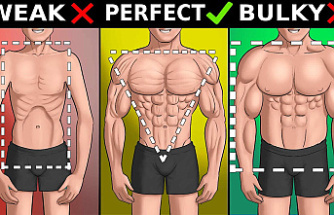Any concrete mixture should have sufficient workability so that it can be evenly placed and compacted in the frame. High workable cement is essential when working with thin elements like beam junctions, slabs, or columns. So, to make the mixture workable enough, water is added to the mixture. Adding water will surely give it a flowing consistency, but it will also decrease the concrete strength.
The use of water reducers in the mixture solves this problem as they help improve the concrete's workability. They reduce the water content and transform a stiff low-slump concrete into pourable concrete. Water reducers are available in two types: plasticizers and superplasticizers.
What Is a Superplasticizer?
Super-plasticizer, a high-range water reducer, is a type of admixture used to improve the concrete's workability. The basic types of superplasticizers are:
- Polycarboxylate ether superplasticizer (PCE)
- Sulfonated melamine-formaldehyde (SMF)
- Sulfonated naphthalene sulfonate (SNF)
- Sodium lignosulfonates
Superplasticizers can reduce the water content to up to 30 percent compared to plasticizers, reducing water from 5-15 percent. This helps create highly fluid and workable concrete. It is useful in heavily reinforced structures, where you can't achieve satisfactory consolidation by vibration quickly.
Benefits of Superplasticizer
Depending upon the type, dosage, and time of addition, a superplasticizer can improve cement workability. It can reduce the water requirement by 15 to 40 percent, offering high-strength and low-permeable concrete. As it disperses the cement, the quantity of cement is also reduced in the mixture. It allows for higher-than-normal workability of cement improving by 1-2 hours; this further increases the construction speed.
What Is Polycarboxylate Ether-Based Superplasticizer?
Polycarboxylate ether-based superplasticizer is the third-generation product developed in Japan in the 1980s. It can help maintain the concrete fluidity longer than the melamine and naphthalene-based superplasticizers. Melamine SPs (SMF) can retain water between 20 to 30 percent, while the naphthalene SPs (SNF) can retain about 30 percent.
In comparison to these, the PCE superplasticizer can retain up to 40 percent of water. Even though it's more expensive than other SPs, it's preferred for its performance and advantages over formaldehyde solution. It can fluidize cement even at low water to cement ratios with a relatively low dosage. Its slump retention capability is also higher than other SPs.
There are various factors that you should consider while buying a polycarboxylate ether superplasticizer. Some of them are listed below.
Questions to Ask Before Buying Polycarboxylate Ether Superplasticizer
Rate of Water Reduction
The standard water reduction rate of PCE is about 40% with specific concrete and dosages. However, it may vary depending upon the manufacturer you choose. So, ask your manufacturer about the water reduction rate of PCE that they are offering.
Slump Loss Control
The addition of PCE helps maintain the initial slump of mixed concrete. Make sure that the PCE you purchase meets your needs. The slump control should be about 15 percent if you wish to use it with ready-mix solutions or transport it to distances.
Type
You can buy a Polycarboxylate superplasticizer (PCE) in powder or liquid form. Even though many of their properties are the same, they differ in density, solid content, and appearance. So, you need to make your choices based on your requirements. Here are some of its types:
- PCE-Powder is white with 98.0±1.0 solid content. It can be diluted in water or used directly in the mix.
- PCE-40 is a light yellow colored liquid with a minimum of forty percent solid content.
- PCE-50 is a colorless liquid with solids content exceeding fifty percent.
Compatibility
The cement that you will be using should be compatible with the PCE. So, it's necessary to check the compatibility before you purchase any. Usually, there is no such restriction, and most of the superplasticizers go well with any cement.
Price
As PCE is the most advanced of all the superplasticizers, it is also more expensive than all the other SPs. Hence, you should check the prices with all the manufacturers to ensure a good deal. It can significantly affect your overall project, so you must consider this while budgeting.
Non-Flammable
PCE is non-flammable and non-explosive by nature. Never compromise on safety. Whenever you buy PCE from any manufacturer, make sure it's certified and meets all the safety standards.
So, these were some of the things that you can consider when buying PCE. The polycarboxylate ether superplasticizer should provide a high water-reduction rate and strong cement dispersion. It should be capable of reducing slump loss of concrete mix over time.












